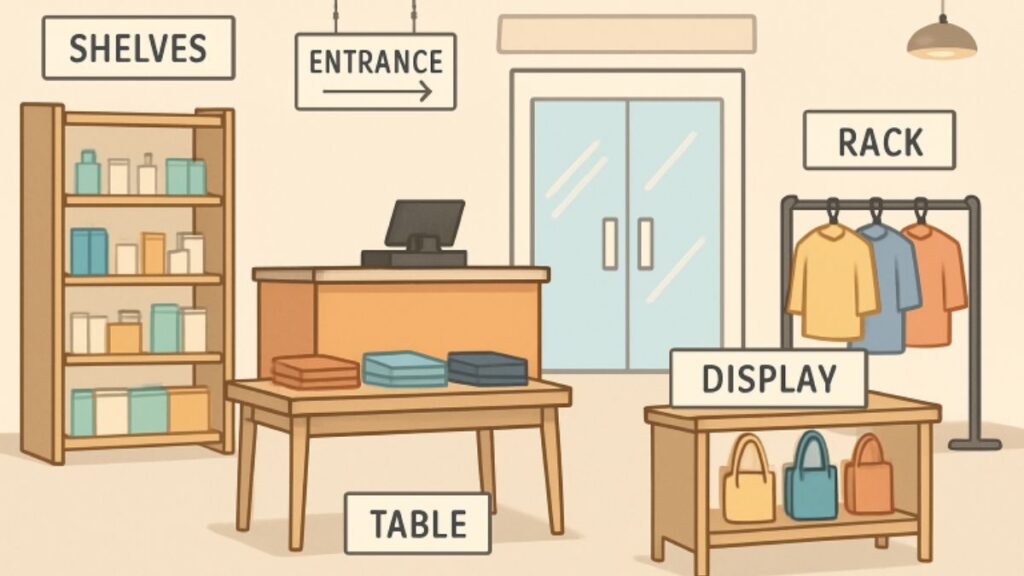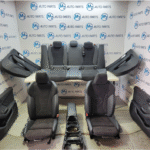The Role of Store Fixtures in Retail Environments
Store fixtures form the core of retail environments, guiding customer flow, highlighting products, and setting the space’s personality. Well-designed fixtures shape the shopping experience, influencing movement and product exposure. For instance, a refrigerated display not only cools items but also affects store navigation and product visibility. Fixture strategy is vital in both convenience stores and immersive showrooms. Proper fixture selection and placement can boost sales by helping customers find and be led toward products. Versatile displays, from grocery refrigerated cases to boutique tables, support casual browsing and purposeful shopping.
How Fixtures Drive Visual Merchandising Success
Fixtures are the backbone of every visual merchandising strategy. Adjustable shelving, minimalistic tables, and modular racks each serve as a blank canvas for creative product displays. By varying fixture height, orientation, and grouping, retailers build narrative-driven sections that lead the eye and reinforce branding. A well-staged endcap, themed counter, or refrigerated display case can boost dwell time and invite impulse purchases. There is a strong link between flexible fixture use and increased customer engagement. Retailers who frequently refresh displays—with new arrangements or seasonal accents—encourage return visits and greater customer interaction with products. This ever-evolving landscape fosters a sense of discovery, driving both brand loyalty and higher basket values.
Fixtures and the Buyer’s Journey: Subtle Influences on Shopping Habits
From the moment shoppers enter, fixture placement influences their path and choices. Uniform heights create calm and order, helping exploration, while features like kiosks and demo stations invite engagement. Fixtures guide customers through a logical journey, ensuring each product gets attention. For example, supermarkets often place fresh produce near the entrance in appealing displays, creating a positive first impression. Retailers use fixtures from checkout counters to window displays to influence behaviors and boost sales.
Sustainable Fixtures: Balancing Form and Function
Sustainability is essential in modern retail design. Evolving consumer expectations drive the need for eco-friendly fixtures like recycled materials, energy-efficient lighting, and modular construction. These options lower environmental impact, enhance brand reputation, and reduce costs. Reconfigurable fixtures also minimize waste during resets or remodels. Prioritizing durable fixtures benefits the environment and the business’s finances.
Adaptable Store Fixtures for Changing Retail Needs
Retail constantly changes with product lines, traffic, and promotions shifting. Adaptable fixtures like rolling racks and collapsible displays enable quick responses to resets and branding overhauls. These fixtures foster novelty, encouraging repeat visits and loyalty. Flexible designs support growth, accommodating seasonal surges and new opportunities.
Future Trends in Store Fixtures and Retail Design
Retailers are integrating digital channels with fixtures, enhancing personalization, and bringing omnichannel retail to life. Data-driven, flexible fixture layouts will enable stores to tailor product presentations to local demographic trends or time of day. Eco-conscious design is accelerating, with retailers and consumers prioritizing sustainability. Fixtures will enhance sensory engagement, incorporating scent, sound, or augmented reality. AI will adjust displays in real time, setting the stage for ongoing transformation in the retail industry.
Best Practices When Integrating New Fixtures
To ensure store accessibility, invest in modular or multi-functional fixtures that can quickly adapt to new products or trends. Prioritize sustainable materials and test new layouts in small sections to gather customer feedback. Work closely with designers to balance brand identity, shopper psychology, and space functionality. Modern fixtures support aesthetics and drive superior customer experiences and operational agility, contributing to long-term brand success. As the retail landscape evolves, fixture innovation remains crucial for effective store design.
Conclusion
Store fixtures are more than just functional tools; they are strategic assets that shape customer experiences, boost engagement, and influence buying decisions. They guide foot traffic, enhance visual merchandising, and create an environment where products stand out and shoppers are inspired to explore. As sustainability, adaptability, and technology redefine retail, fixture design remains key to operational efficiency and brand storytelling. Retailers investing in versatile, eco-friendly, and innovative fixtures will better meet evolving consumer expectations and succeed in a competitive market.







